Eralytics
Coatings & Industry > Physical properties > Flash Point
ERAFLASH
The Safe Side of Flash Point Testing
The ERAFLASH measures according the continuously closed cup flash point testing methods ASTM D7094 and ASTM D6450. ASTM D7094 shows no statistical bias to the former ASTM D93 Pensky Martens method. The sample volume is only 2 ml. During measurements an electric arc ignites the sample vapor and the analyzer determines the flash point by the pressure change inside the closed cup. Flash point testing never was safer and easier.
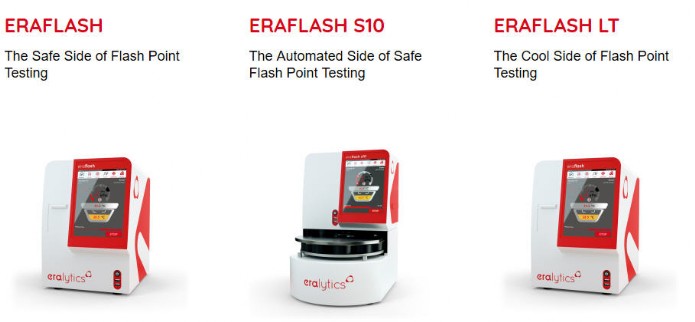
ERAFLASH S10
The Automated Side of Safe Flash Point Testing
The latest addition to eralytics’ flash point tester series combines safest measurement with a 10-position autosampler.
The intrinsically safe CCCFP methods ASTM D7094 and ASTM D6450 are ideal for unattended measurements.
ERAFLASH S10 ignites the vapors of 1-2 ml of sample inside a closed chamber and measures the according pressure increase.
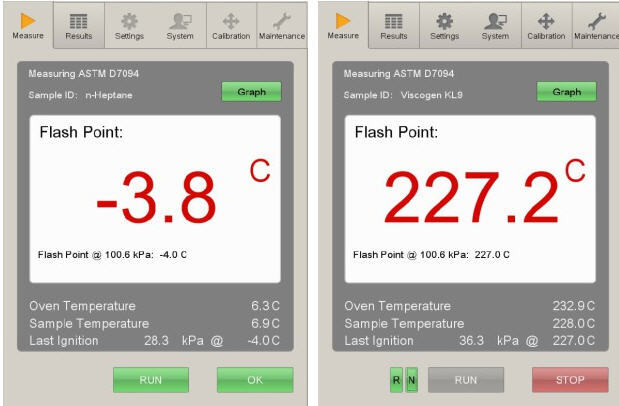
Autosampler for Flash Point Testing
ERAFLASH S10 is the first 10-position autosampler for flash point testing. It uses the intrinsically safe methods ASTM D7094 and ASTM D6450. With a low sample volume of 1-2 ml only and the continuously closed sample cups they are ideally suited to built a completely safe autosampler for flash point testing.
This makes ERAFLASH S10 the ideal solution for unattended flash point testing.
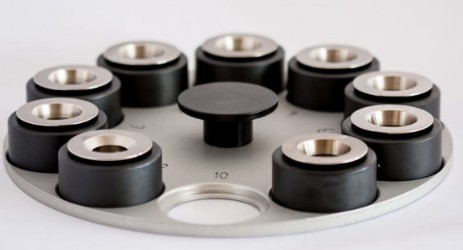
Cost Efficient Fast Flash Point Testing
When looking at valuable products, especially with small batch sizes, flash point testing using the well-known Pensky Martens principle can consume a significant amount of sample, thus leading to high analytical costs. When performing flash point testing according to ASTM D7094 just 2 ml of the sample are needed. ASTM D6450 reduces this volume even further to 1 ml.
ERAFLASH S10 is therefore a welcome addition to testing labs handling large amounts of costly samples every day. This includes fragrances, paints and varnishes producers.
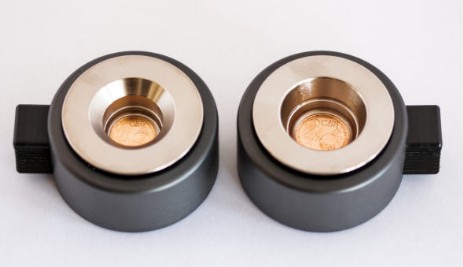
- Peltier Boost Technology™
Similar to eralytics’ single position flash point tester the patented PBT – Peltier Boost Technology™ allows flash point testing below 0°C (32°F) and above 200°C (392°F) with a single instrument. PBT separates the Peltier elements during the heat up at 100°C shielding them from higher temperatures that would normally harm them. During cool down, however, they can be used for active cooling starting at 200°C and thus reduce the turnaround time significantly. PBT also facilitates the same temperature range of -25°C (-13°F) to 420°C (788°F) of our single position flash point tester in an autosampler for flash point testing.
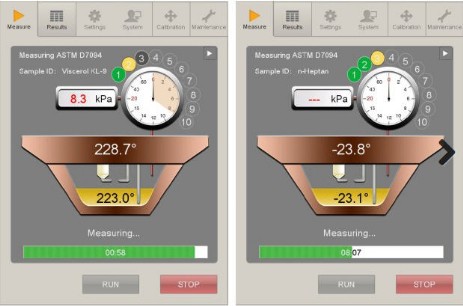
Measurement Procedure
Just four easy steps are required for an unattended safe and fast flash point testing at maximum precision:
- Enter sample IDs and operator name
- Select the measurement standards and add additional parameters (e.g. expected flash point)
- Fill up to 10 sample cups with samples, place the sample cups on the carousel and close the cover plate
- Press the RUN button
During flash point testing the instrument visualizes the measurement procedure on the screen showing the sample and oven temperature as well as pressure gauge displaying the pressure increase after ignition.Additional information about the currently measured sample, as well as finished and still samples to be measured are displayed. After the measurements the flash point temperature is corrected for the atmospheric pressure and rounded to the next 0.5°C. All results will be saved in the corresponding result file.
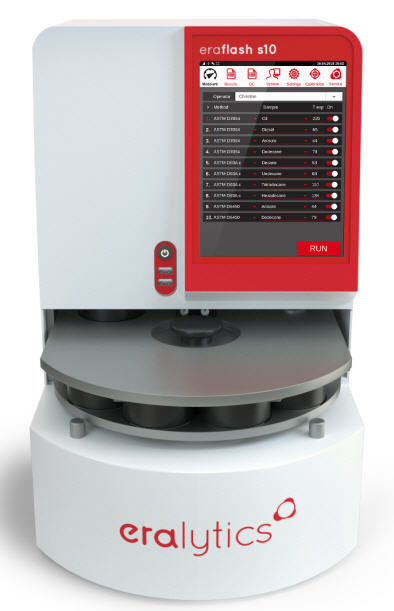
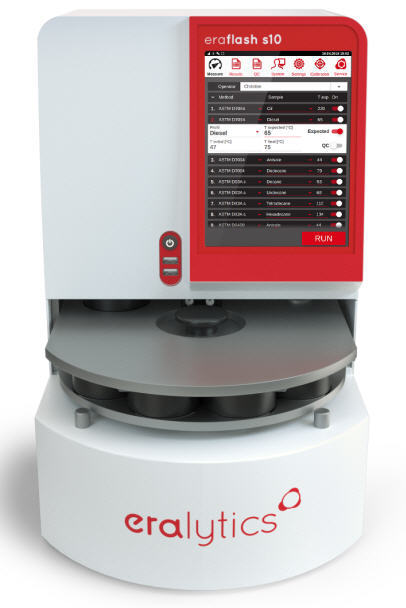
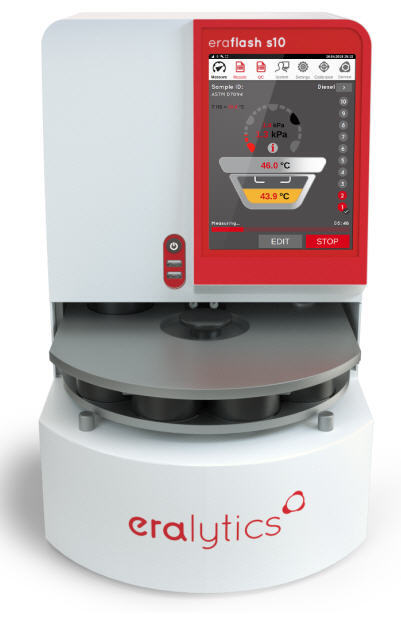
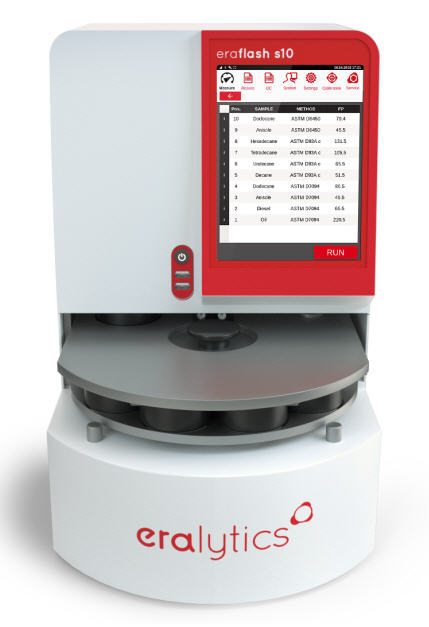
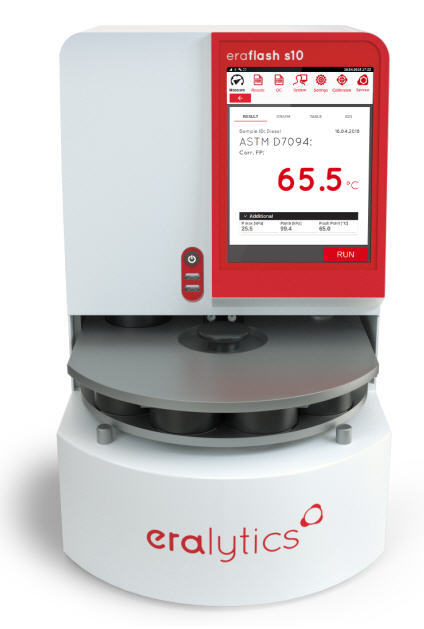
| Available Test Methods | ASTM D6450, ASTM D7094 |
Pre-Programmed Correlation Methods to... | Pensky Martens Closed Cup: ASTM D93, EN ISO 2719, DIN 51758, IP 34, JIS K2265 TAG Closed Cup: ASTM D56 Abel Pensky Closed Cup: ISO 13736, IP 170 Small Scale Closed Cup and Flash / No Flash methods: EN ISO 3679, EN ISO 3680, ASTM D3828 |
| Fuel Specifications (ASTM D7094) | ASTM D396, ASTM D975, ASTM D2880, ASTM D3699, ASTM D7467 |
| Speed Tests | Fast screening test programs for unknown samples |
| PBT - Peltier Boost Technology™ | High speed heating & cooling -25 °C to 420 °C with a single analyzer |
| CPT - Contamination Prevention Technology™ | Advanced electrode protection and self-cleaning ignition system to minimize cleaning and maintenance |
| Combustion Graphics™ | Display of combustion characteristics for contamination analysis |
| QuickCal™ | Dry Block Calibration with eralytics unique directly attached Temperature Calibration Block (EF01-TCB) |
ASTM D7094 and ASTM D6450
ASTM
D6450 was the first Continuously Closed Cup Flash Point (CCCFP) and
uses 1 ml sample volume only.
However, the obtained results didn’t
compare well to the well-established ASTM D93 Pensky Martens method.
Therefore a modified successor method was developed.
ASTM D7094 (Modified CCCFP) uses 2 ml of sample volume and a
different heating rate than ASTM D6450 with the effect that it shows no
statistical bias to ASTM D93 (Pensky Martens).
This was proven by an
ASTM round robin test in 2004.
In addition this round robin showed, that the actual repeatability
and reproducibility using Pensky Martens flash point testers is up to 50
% worse than the values stated in ASTM D93.